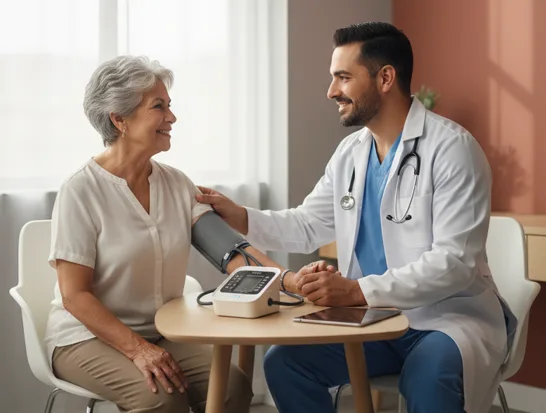Institutions face a rising diabetes burden. Approximately 38.4 million Americans live with diabetes about 11.6 % of the population, and the cost is staggering. Recent reports place medical costs and lost productivity at over $400 billion annually. For clinics and health systems, the operational strain is significant. Between scheduled visits patients may drift off plan, lack real-time data, and miss timely interventions. Many institutions report insufficient follow-up, poor adherence, and missed opportunities to intervene earlier.
Moreover, value based care programs emphasize metrics like A1C control, readmissions, and patient satisfaction areas where traditional episodic care often falls short. In this context, institutions must rethink care models: shifting from encounter based to continuous-care frameworks. Remote Patient Monitoring offers a way to fill data gaps, engage patients between visits, and reinforce therapeutic adherence. As American Diabetes Month spotlights diabetes care, it becomes a strategic moment for institutional leaders to consider how innovation supports both outcomes and operational effectiveness.
RPM: A Continuous Solution for Diabetes Control
Remote Patient Monitoring gives providers real time access to patient data. Glucose levels, blood pressure, and weight trends appear continuously. Clinicians can act before complications worsen. Studies show RPM improves A1C and reduces hospitalizations by up to 25% . Continuous monitoring also increases patient adherence. When patients see their own progress, engagement grows. They respond faster to clinical advice and alerts. Health systems using RPM report stronger outcomes and higher satisfaction. Data sharing across teams also improves coordination. RPM integrates with telehealth platforms and existing workflows. It extends clinical capacity without replacing personal interaction.

Financial and Operational Impact for Clinics
RPM creates measurable value for clinics and institutions. It supports goals in value-based programs by improving A1C and reducing readmissions. Clinics using RPM report fewer hospital days and emergency visits . Operationally, this means less staff burden and fewer unnecessary appointments. Financially, institutions gain more efficiency and better reimbursement rates. Reports show that organizations using RPM increase revenue by 15-20%. This growth comes from better coding, patient retention, and fewer gaps in care. RPM data also supports quality reporting and compliance. In value based models, each prevented complication has financial impact. RPM strengthens preventive care and allows proactive engagement.
Technology That Drives Institutional Excellence
American Diabetes Month reminds us that innovation and empathy must coexist. Remote Patient Monitoring enables both. Esvyda’s platform turns continuous data into clinical insight. It helps institutions lower A1C, prevent complications, and improve patient satisfaction. The solution is bilingual, secure, and fully compliant. It supports coordinated care and long-term engagement. Leaders can meet value-based goals while improving outcomes. For CEOs and medical directors, Esvyda is more than technology it’s a strategic partner. It drives quality, retention, and financial performance. Diabetes care becomes not only reactive but proactive. With Esvyda, institutions move toward a future where technology sustains human care.
How Esvyda Leads the Way in Remote Diabetes Care
Esvyda delivers a bilingual, HIPAA compliant RPM platform built for health institutions. It connects directly to EHR/EMR systems and offers automatic alerts. Providers track A1C, blood pressure, and patient engagement in real time. Esvyda’s analytics identify improvement areas and optimize treatment plans. The bilingual interface helps reach Hispanic and multicultural populations effectively. Institutions using Esvyda can maximize reimbursements and optimize workflows. Teams can coordinate care across specialties without extra complexity. The platform supports both small clinics and large health systems. Esvyda also helps institutions meet value-based care metrics. It improves outcomes, retention, and patient satisfaction while reducing manual work.

Download this artice
RPM: Driving Diabetes Care in Institutions
RPM elevates diabetes programs for health institutions: better A1C, higher retention, stronger value-metrics during American Diabetes Month. Esvyda delivers a bilingual, HIPAA compliant RPM platform built for health institutions. It connects directly to EHR/EMR systems and offers automatic alerts.
Click Here
